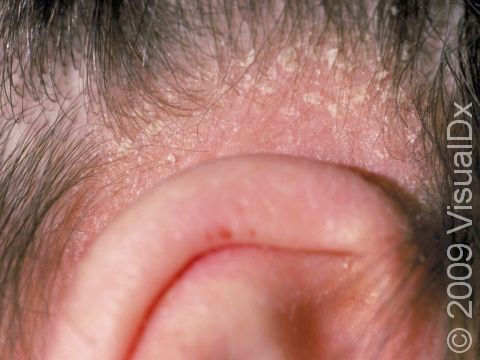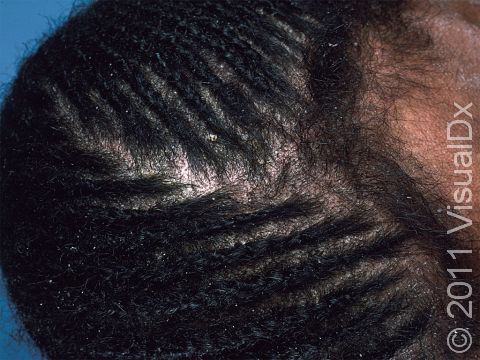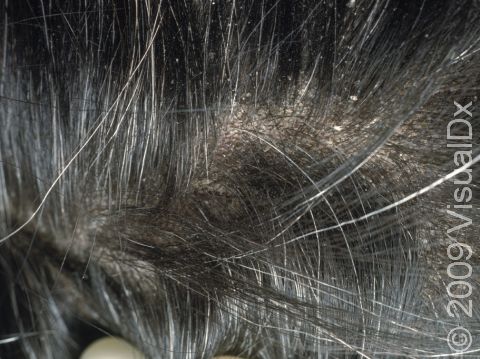Dandruff
Dandruff, also known as seborrhea, is a common non-contagious condition of skin areas rich in oil glands (the face, scalp, and upper trunk), marked by flaking (overproduction of skin cells) and sometimes redness and itching (inflammation) of the scalp, varying in severity from mild flaking of the scalp to scaly, red patches. The normal skin yeast, Pityrosporum ovale, lives in oil-rich skin regions and plays a role in this condition. Dandruff may be worse with stress, winter, and infrequent shampooing. Although there is no “cure” for dandruff, control is usually possible with medicated shampoos.
Who's At Risk?
Dandruff occurs in 15–20% of the population. The problem affects all races, may be a bit worse in men, and starts after puberty (although babies have a version called cradle cap). Dandruff peaks around the age of 40 and then may improve. Severe dandruff is frequently seen in people with Parkinson’s disease and others with central nervous system problems, as well as in those with HIV infection.
Signs & Symptoms
- The scalp is itchy and flakey.
- One or more of the following areas may have patches of red, scaly skin: the scalp, hairline, forehead, eyebrows, eyelids, creases of the nose and ears, ear canals, beard areas, breastbone, midback, groin, or armpit.
- In darker skin, affected areas may look lighter in color.
Mild dandruff – only some flaking with or without redness in a few small areas
Moderate dandruff – several areas affected with bothersome redness and itch
Severe dandruff – large areas of redness, severe itch, and unresponsive to self-care measures
Self-Care Guidelines
Most cases of dandruff are easy to control with non-prescription home measures. These include:
- Frequent (daily) shampooing or a longer lather time.
- Stopping use of any hairstyling products.
If a regular daily shampoo fails, consider an over-the-counter dandruff shampoo. There are several types (containing ketoconazole, selenium sulfide, 2% pyrithione zinc, salicylic acid, or tar), and one may work better than another. Sometimes one will work well for a time and then become less helpful; then it may help to switch to a different type.
To remove thick scale, apply warm mineral oil or olive oil and wash out several hours later with dishwashing liquid or a tar shampoo.
Treatments
- Corticosteroid creams or solutions
- Sulfur or sulfacetamide products applied topically
- Ketoconazole shampoo or cream
Visit Urgency
Seek medical help if there is no response to self-care measures.
Trusted Links
References
Bolognia, Jean L., ed. Dermatology, p. 216. New York: Mosby, 2003.
Wolff, Klaus, ed. Fitzpatrick’s Dermatology in General Medicine. 7th ed, pp. 219-224. New York: McGraw-Hill, 2008.
Last modified on October 10th, 2022 at 4:14 pm

Not sure what to look for?
Try our new Rash and Skin Condition Finder


